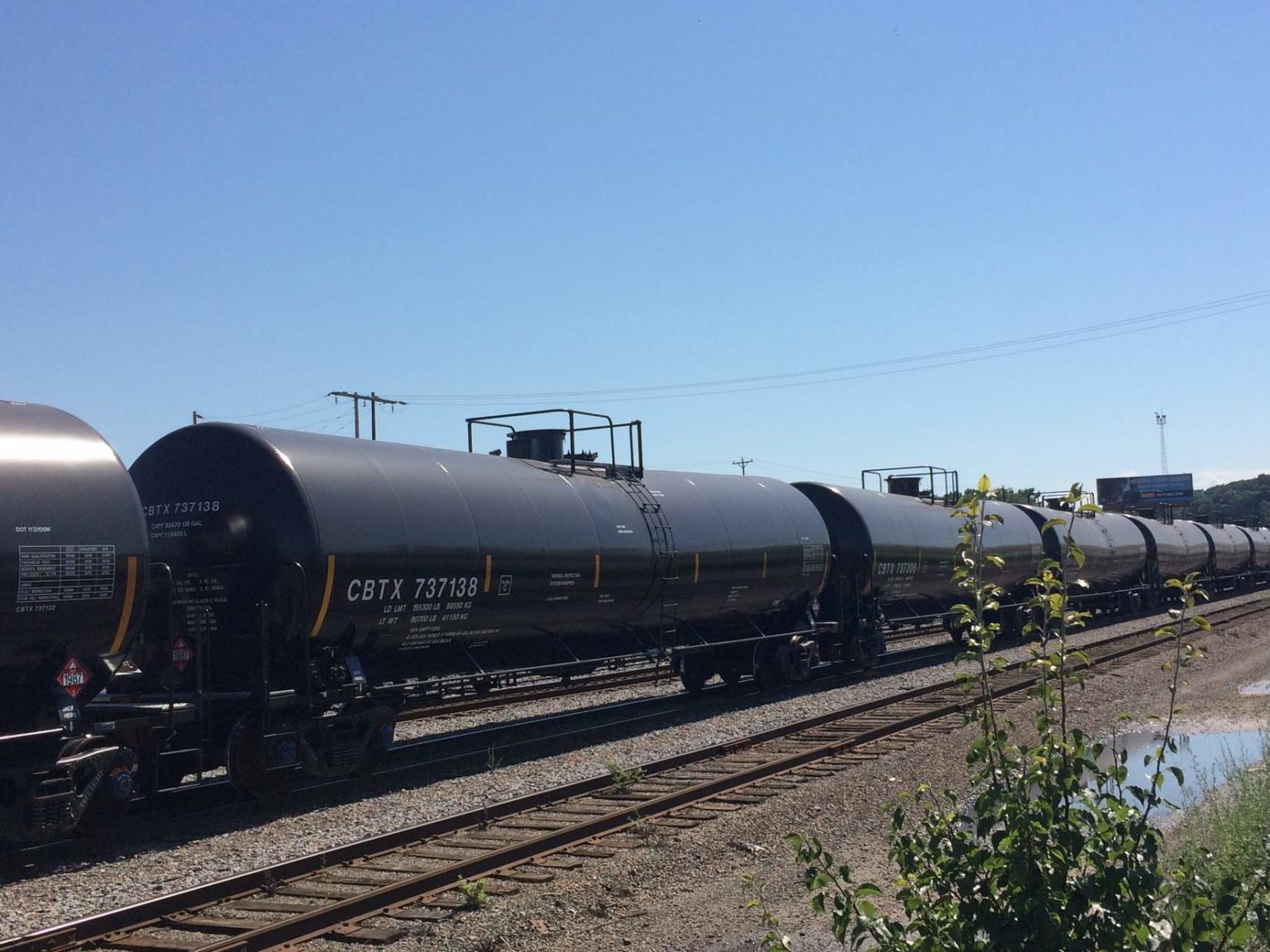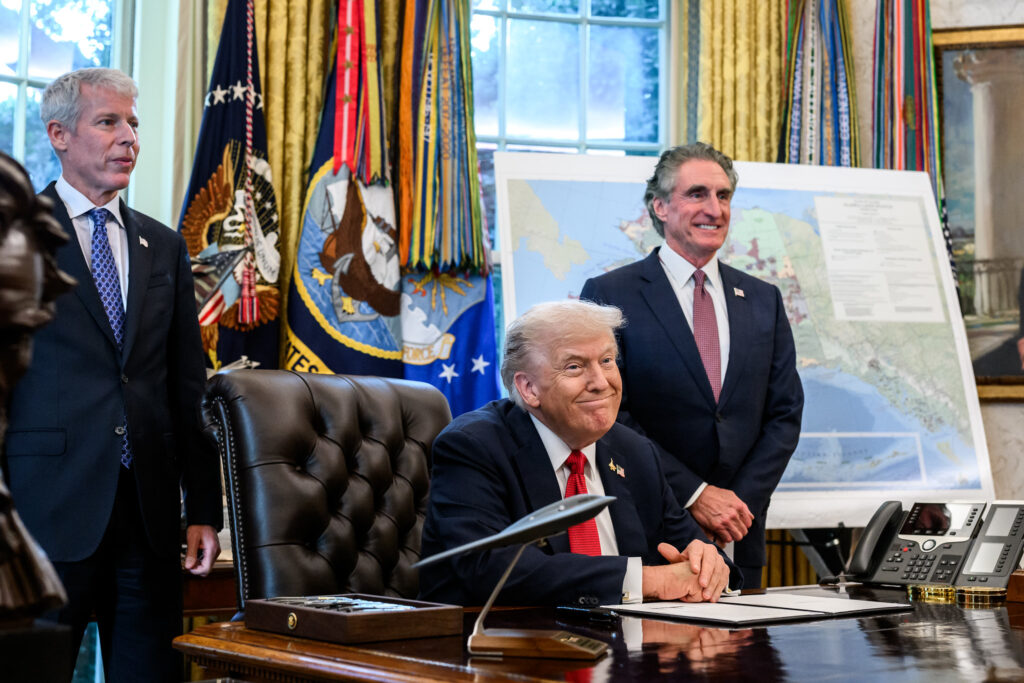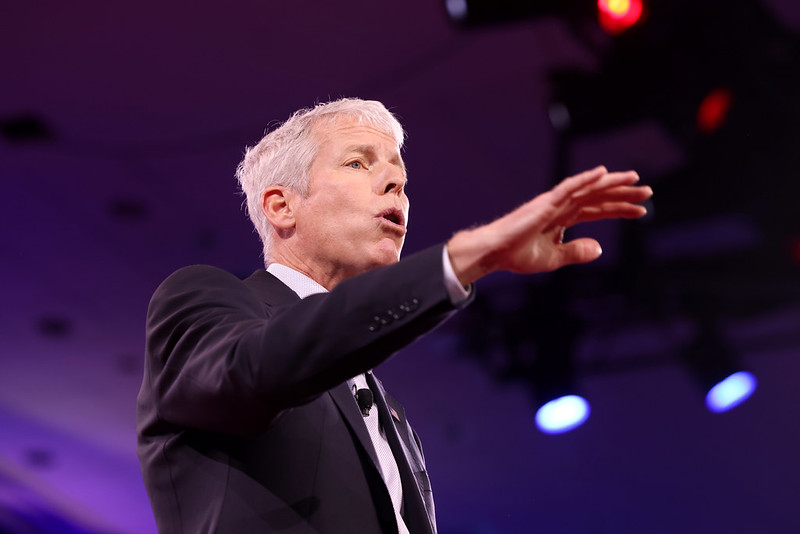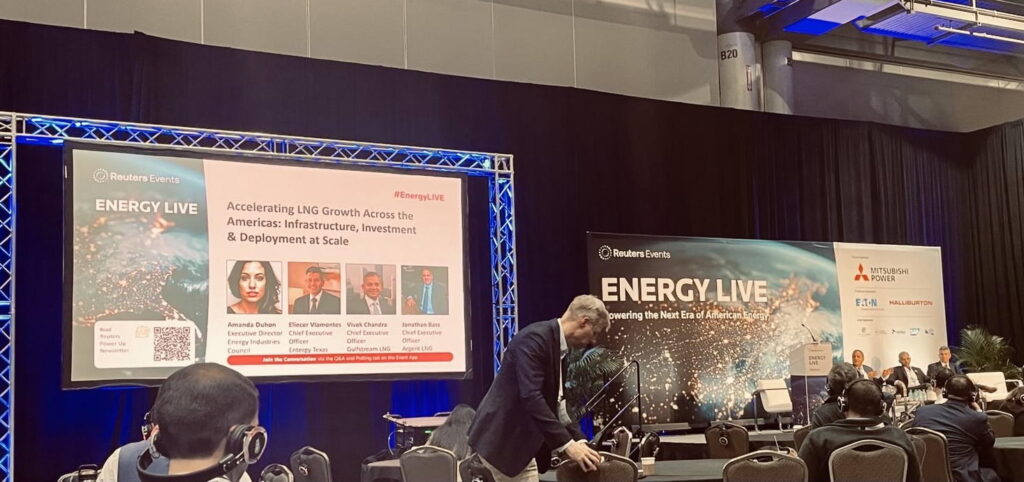The election of Donald Trump was a big win for the oil and rail industries. Shortly after the election, Edward Hamberger, CEO of the trade group the Association of American Railroads, addressed a conference in New York City, noting that “the policy landscape in Washington, D.C., dramatically shifted on Election Day.”
The trade publication Railway Age also reported Hamberger saying that “Washington leaders can be powerful change agents in fixing a broken regulatory system.”
Of course when the top rail lobbyist talks about “fixing” a broken regulatory system, what he means is moving to a system where the rail industry regulates itself — which is why the rail industry is so fond of President Trump. And why the American public should worry.
“You are going to see a lot of additional relief from these horrible regulations that are killing our country,” President Trump said in October of 2017.
Together, Trump and the rail lobbyists had great success this year in stopping new safety regulations that would make oil trains safer and deadly rail accidents less likely, but the biggest triumph was probably changing the way the rail industry itself is regulated.
Performance-Based Regulations
The book Death Rode the Rails by Mark Aldritch highlights some early attempts at regulating the rail industry. In 1882, in an attempt at improving rail safety, the state of Connecticut required rail operators to use new car couplers. The couplers are the devices that connect one car to another.
The failure of the most common coupler at the time resulted in many rail worker deaths and train accidents. When Connecticut made its requirements for new couplers, the Hartford Courant newspaper reported that the only opposition to this early regulation was from “railroads and undertakers.”
Over a hundred years later in 2013, as the rail industry successfully fought regulations to reduce wear and tear on rails, Richard Inclima, director of safety for the union representing rail inspectors, summed up the reality of what happened: “There was certainly a lot of pushback and a lot of political pressure put on [the Federal Railroad Administration] not to adopt regulations for rail wear. The industry doesn’t want to be regulated.”
And with the election of an anti-regulation president, the rail industry is working hard to move to a system of self-regulation, centered on the concept of performance-based regulation.
What is performance-based regulation? According to a 2002 paper from Harvard’s Kennedy School of Government, it is “when a regulation sets performance goals, and allows individuals and firms to choose how to meet them.”
Following Trump’s election, the industry got right to work making this happen.
In March 2017, the Competitive Enterprise Institute (CEI) released the paper, ”Toward Performance-Based Transportation Safety Regulation,” advocating this new approach for the Federal Railroad Administration. CEI is well-known for its free market anti-regulatory stance. CEI’s 2017 annual report on federal regulations opens with the assertion that “regulations impose enormous burdens on American consumers, businesses, and the economy.”
In June, Sen. Deb Fischer (R-Neb.) introduced the Railroad Advancement of Innovation and Leadership with Safety Act (RAILS). This bill specifically calls for the Federal Railroad Administration to use performanced-based regulation: “Before proposing or adopting a rule under this subtitle, the Secretary of Transportation shall consider an approach to the rule that specifies performance objectives rather than identifies or requires the specific manner of compliance that a regulated entity must adopt.”
The Association of American Railroads was quick to offer its support for the RAILS bill, telling Railway Age that the industry supports “a departure from today’s prescriptive, command-and-control approach to rulemaking to one encouraging innovation with a focus on outcomes.”
In that same Railway Age opinion piece, the author championed Sen. Fischer’s bill, saying it would “improve rail safety through amplified use of the free-market.”
So what exactly does that look like?
Electronically Controlled Pneumatic Braking
The brakes currently used on oil trains have been described by members of the Federal Railroad Administration as “Civil War era” technology and “19th century technology.” There is a large body of research and real-world evidence showing that, compared to the current braking systems, modern electronically controlled pneumatic (ECP) brakes provide significant safety benefits. However, in the new era of performance-based regulations, the industry and its partners in Congress quickly repealed a 2015 rule requiring ECP brakes on oil trains.
Did they ignore all of the science and real-world evidence? Yes. Will it result in higher rail and oil company profits? Yes. That’s what’s known as a free-market success.
Two Person Crews
One of the industry’s arguments against having two-person crews on trains is that the automated safety technology known as positive train control (PTC) will provide an additional level of safety, thus negating the need for a second crew member. This remains an argument despite the fact that PTC has not been widely implemented — and will be less effective without ECP braking systems.
The Trump administration has already canceled plans for regulations that would require train operators to be tested for sleep apnea. Additionally, rail company CSX has now made it a policy that rail employees are no longer allowed to nap when the trains they are operating are parked.
In a Railway Age column about the changes being made at CSX, one CSX employee is quoted as saying, “These changes are giving the impression that concern for the almighty dollar has become more important than worker safety,” which certainly appears to be the case.
And, of course, the industry has attacked the evidence supporting two-person crews, with AAR CEO Edward Hamberger saying, “There are no data supporting this proposed rule, and it will provide no safety benefit to railroads, their employees, or the public. With no data showing that one-person operations compromise safety, there is no basis — other than anecdotal storytelling — for enacting a general prohibition on crew size reductions.”
In a performance-based regulatory environment, this regulation is dead on arrival. Unsurprisingly, Reuters recently reported that “The agency [FRA] has also delayed finalizing regulations proposed during the Obama administration to require railroads to run all trains with at least a two-member crew unless it got specific approval.”
Rail Wear Regulations
In perhaps one of the most brazen attempts to avoid regulation, AAR spokesperson Ed Greenberg made the argument that the railroads were “unaware of any science-based data supporting rail wear limits.” Rail failure is one of the most common causes of derailments — especially with the heavier and longer trains hauling oil — and yet the lobbyists are “unaware” of any data supporting rail wear limits.
After a 2015 oil-by-rail derailment in West Virginia that resulted in a major oil spill into a river and oil tank cars burning for several days, FRA acting administrator Sarah Feinberg raised the issue of rail wear standards.
“It is increasingly clear that as limits are pushed on rail wear, as unit oil trains are crossing the country, there is cause for concern and need for action,” Feinberg said.
A National Academy of Sciences report released at the end of 2017 even highlighted rail wear as a safety issue that needed to be addressed.
Despite the evidence, the industry continues to push self-regulation for rail wear and track maintenance, and regulators have now shelved the proposed regulation, according to the Insurance Journal. In the same article, the publication reported: “The Trump administration said in a document posted last week that the previous administration’s initiative had been moved to the ‘long-term action’ list, meaning it does not plan any additional action for at least 12 months on the proposal and could abandon it completely.”
Making Oil Trains Less Likely to Explode
If there were one thing which could make oil trains less dangerous, it most likely would be reducing the volatility of the oil transported, making it less prone to explode and burn during derailments. We have covered this topic extensively at DeSmog, which includes this video on the subject.
While the Obama administration failed to address oil volatility as part of its 2015 oil-by-rail regulations, at the end of 2016 the administration did announce it would consider new regulations, something which New York Attorney General Eric Schneiderman petitioned it to do.
This proposed regulation is not currently found on the Department of Transportation list of “Significant Rulemakings” and most likely won’t ever appear there during a Trump administration.
The Rest of the List
There are several other measures which could improve rail safety that aren’t even being considered due to the industry’s effectiveness at removing them from the conversation. Train length, train weights, and the impacts of sloshing in oil train cars are all known risk factors not even being considered for regulation.
Free Markets Work … to Maximize Profits
It appears that the Trump administration plans to basically allow oil and rail lobbyists to determine the fate of any new rail regulations. In an era of performance-based regulations, the industry will argue that the costs of safety will always exceed the benefits.
Nowhere has this “free market” approach to safety shown the potentially disasterous consequences than Quebec, Canada’s Lac-Mégantic oil train disaster which killed 47 in 2013. As the trial of the employees involved in that deadly accident revealed, the catastrophe was the direct result of corporate cost cutting.
So who does this free market approach benefit? Just like in the 1800s, it’s a short list: railroads, undertakers, politicians, and lobbyists.
Main image credit: Justin Mikulka
Subscribe to our newsletter
Stay up to date with DeSmog news and alerts






